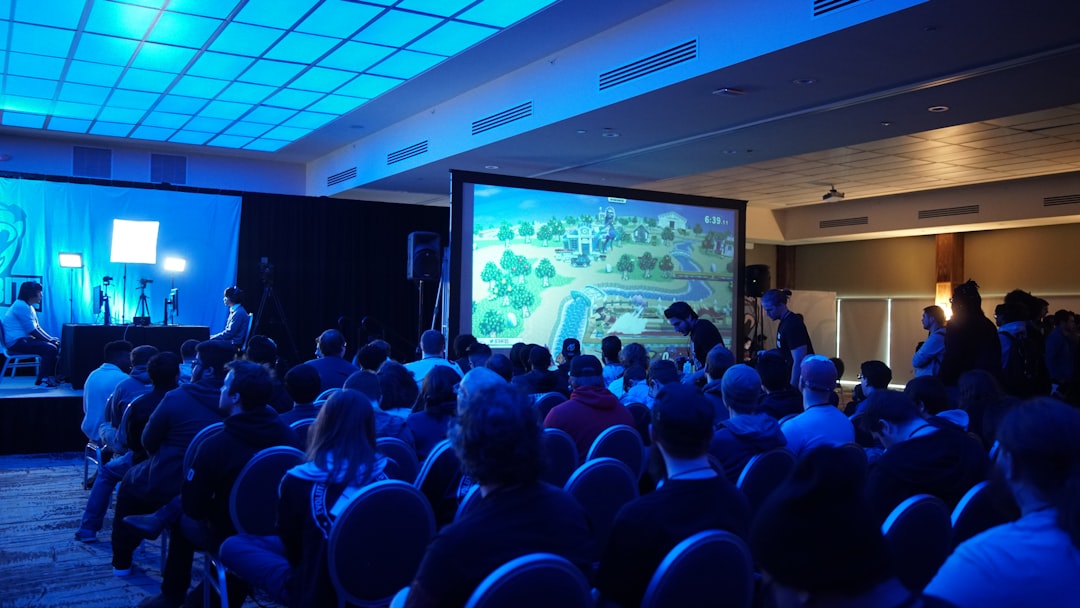- 11 Historic Wildfires That Changed Fire Management Data Reveals - October 4, 2025
- The 1883 Krakatoa Event And Its Global Weather Effects Records Show - October 2, 2025
- How Scientists Use Climate Models To Forecast The Future - October 2, 2025
Massive Multiplayer Impact: Gaming’s Surprising Carbon Footprint

The video game industry is bigger than movies and music combined, consuming huge amounts of energy. According to a 2023 report by the International Energy Agency, gaming globally uses about 34 terawatt-hours of electricity each year—about the same as the entire country of Denmark. Most of this energy goes into powerful consoles, gaming PCs, and always-on servers that keep online games running 24/7. While this might sound alarming, it’s also created a unique opportunity for positive change. Game publishers and hardware makers are now facing rising pressure from both gamers and climate advocates to lower emissions and make playing more eco-friendly. Many gamers aren’t just aware of their impact—they want to do something about it. This groundswell of awareness is driving real shifts in how the industry operates.
Green Game Design: Developers Weave Climate Action into Play

In recent years, more studios have started weaving environmental messages directly into gameplay. For example, the wildly popular game “Minecraft” introduced a “Climate Hope” world in 2024, letting players plant virtual forests and learn about renewable energy. Ubisoft’s “Riders Republic” held an in-game event in 2023 where wildfires swept the landscape, teaching players about climate response and resilience. According to a 2024 survey by the UN Environment Programme, over 65% of gamers said they learned something new about the environment from a game. By blending fun with purpose, developers help players both reflect and act, making climate action a part of their digital adventures. These initiatives are designed not to preach, but to inspire curiosity and real-world behavior changes.
Charity Streams: Gamers Raise Big Money for the Planet

Live-streaming platforms like Twitch and YouTube have become powerful fundraising engines for climate causes. In 2024, the annual “Green Game Jam” event, organized by Playing for the Planet, raised over $1.2 million for reforestation and climate adaptation projects. Individual streamers often host 24-hour gaming marathons, encouraging their audiences to donate to climate-focused charities. One of the largest efforts, “Games Done Quick,” added climate action to its list of supported causes in 2023, drawing donations from hundreds of thousands of viewers. According to Tiltify, a fundraising platform, environmental causes saw a 30% increase in donations from gamers between 2023 and 2024. These digital telethons are proof that gamers aren’t just playing—they’re giving back in big ways.
Eco-Friendly Hardware: Industry Pushes for Greener Gear

Major hardware makers have begun to respond to calls for sustainability. Sony’s PlayStation 5, for example, launched a low-power “Rest Mode” in 2023, cutting standby energy use by up to 80%. Microsoft announced in early 2024 that all new Xbox consoles would include recycled plastics and support carbon-aware updates—downloading patches only when cleaner energy is available on the grid. According to a 2024 Greenpeace report, the industry’s overall emissions per console have dropped 25% since 2020. These changes might seem small, but with millions of devices in homes worldwide, their collective impact is significant. Hardware makers are also exploring ways to recycle old systems, reducing electronic waste.
Player-Led Activism: Gamers Mobilize for Real-World Change

Many gaming communities have taken climate action into their own hands, organizing events, petitions, and clean-up campaigns. In 2023, the UK-based group “Gamers for Climate Action” coordinated a global day of action, encouraging members to plant trees and share photos online. The Discord server for “Eco”—a game about building a society without destroying the environment—now has over 50,000 members regularly sharing sustainability tips. According to a 2024 Pew Research Center poll, nearly half of gamers aged 18-29 said they participated in some form of environmental activism inspired by their favorite games. These grassroots efforts show how digital worlds can spark real-world momentum, translating screen time into street action.
Virtual Worlds with Real Lessons: Climate Education in Games

Games are increasingly used in classrooms and educational programs to teach climate science and sustainability. The 2023 game “Terra Nil” challenges players to rebuild ecosystems from barren wastelands, introducing real-world restoration concepts. In 2024, the World Wildlife Fund partnered with Roblox to launch a virtual “Conservation Island,” where young players learn about endangered species and climate threats. According to the Entertainment Software Association, 72% of teachers surveyed in 2023 said games helped their students understand environmental issues better than textbooks alone. These interactive experiences blend play with purpose, making climate education more engaging and memorable.
In-Game Challenges: Climate Missions with Real Rewards

Game publishers have found creative ways to link in-game achievements with real-world impact. For Earth Day 2024, Electronic Arts launched a “Plant a Tree” challenge in “The Sims 4,” pledging to fund tree-planting for every virtual sapling placed by players. Over 2 million trees were planted in-game, and EA donated $500,000 to global reforestation efforts. Similarly, mobile game “Angry Birds 2” offered exclusive rewards for players who completed climate-themed levels, with proceeds going to conservation charities. These campaigns transform digital actions into real-world benefits, letting players see the difference they make—both on screen and off.
Community Collaboration: Gaming Guilds Tackle Sustainability

Gaming guilds and clans—groups of players who team up for missions—are now working together for environmental good. In 2023, the “Green Raiders” guild in “World of Warcraft” began hosting monthly recycling drives and shared eco-friendly tips on their forums. Another example is the “Solar Squad” in “Fortnite,” which organized an in-game fashion show to raise awareness and funds for solar projects in Africa. According to Discord’s 2024 community data, eco-focused gaming groups have grown by 40% since 2022. These collaborations show that teamwork in virtual realms can lead to positive change in the real world, forging bonds that extend well beyond the game.
Corporate Commitments: Game Companies Go Carbon Neutral

Big publishers are making bold pledges to reduce their climate impact. In early 2024, Ubisoft announced it would reach carbon neutrality for all its studios by 2025, using renewable energy and offsetting emissions through verified projects. Microsoft’s gaming division committed to becoming “carbon negative” by 2030, aiming to remove more carbon from the atmosphere than it emits. According to the Carbon Disclosure Project, more than 70% of top game companies now publicly report their emissions and sustainability targets. These corporate efforts signal a major shift, showing that climate action is now a business priority as well as a moral one.
Global Reach: Gaming Connects Players for Climate Justice

Gaming’s massive global reach makes it a powerful tool for spreading climate awareness across cultures. In 2024, the “Playing for the Planet Alliance” brought together studios from over 40 countries to launch synchronized in-game climate messages and events. Games like “Pokémon Go” have hosted worldwide clean-up days, with millions of players logging trash collected in their local parks and neighborhoods. According to Statista, there were over 3.3 billion gamers worldwide in 2024, making the community one of the largest and most connected on Earth. This scale enables unique, borderless campaigns that amplify voices and actions for climate justice everywhere.
Cutting-Edge Experiments: Blockchain and Sustainable Gaming

Some studios are experimenting with blockchain technology to promote sustainability in gaming. In 2023, the game “Treeverse” launched a blockchain-based system that rewards players with tokens for supporting reforestation efforts. Meanwhile, eco-conscious NFT projects are tying digital collectibles to real-world conservation, like planting a tree for every NFT sold. There’s debate about the energy use of blockchain, but developers are shifting to eco-friendly networks, with Ethereum cutting its energy consumption by over 99% after its 2022 upgrade. These innovations show how even the newest tech trends are being steered toward climate-positive outcomes.
Youth Power: Gen Z Gamers Demand a Greener Future

Gen Z, the first truly digital-native generation, is leading the push for sustainability in gaming. A 2024 Nielsen study found that 68% of Gen Z gamers consider a company’s environmental record when deciding which games to buy or support. Young players are vocal online, pushing studios to address issues like e-waste, energy use, and carbon footprints. Student-led organizations like “Climate Replay” have called for more transparency from gaming companies about their environmental policies. This generation’s activism is shaping industry trends, showing that today’s gamers aren’t just playing for fun—they’re playing for the future.
